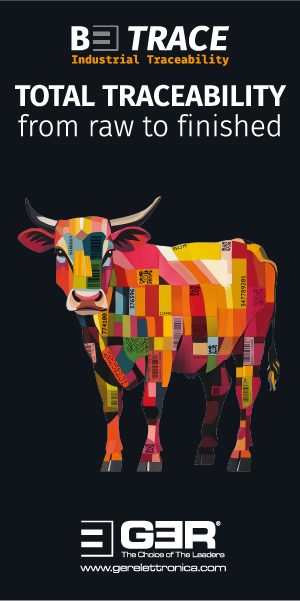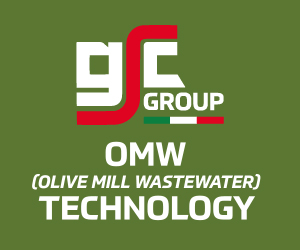Market Intelligence—03.05.22
Macroeconomics
The dominant themes in politics and economics have not changed in the past two weeks. The Russian invasion of Ukraine and the resulting war, the pandemic and its influence on economic activity in China and international supply chains, and inflation and the interest rate policies of the US and European central banks.
It is still difficult to judge what is the most important factor for politics and the economy. We have the daily suffering in Ukraine and the possible food supply shortages that may result from it. We also have the rigid zero-covid strategy of the Chinese government, which is possibly developing into at least as big a problem for economic and political stability worldwide. It still does not appear that the Chinese government is making serious efforts to consider ways other than locking up its population to combat the pandemic. Reports from China, despite media pronouncements, give no reason to believe that an opening can be expected in the very short term. Too much is at stake for the reputation of the political leadership.
It remains particularly difficult to assess the short- and medium-term impact on economic development and supply chains internationally. Ships continue to be held up outside the port in Shanghai, shipments within China are at far from normal levels and thus the movement of goods continues to slow down every day. This not only leads to shifts and delays in supply chains, but also to turnover and financing problems that cannot be overlooked, especially in China. This particularly affects small and medium-sized enterprises and could very quickly lead to a serious threat to economic development in China. Owing to the not very transparent information policy, an assessment from the outside remains problematic.
Even if the reported infections in Shanghai decrease and public life returns to normal after the holiday at the start of May, the consequences will be felt for a long time to come. In any case, the purchasing managers’ and services indices in China fell sharply to values around 40 points. Values below 50 points indicate a contraction in economic output.
The war in Ukraine continues and at least the verbal escalation is developing. The West is united and is constantly supplying Ukraine with more weapons to help prevent the Russian campaign from succeeding.
Inflation is becoming a growing problem, along with possible shortages of certain foodstuffs. Even if most experts agree that the national banks are in a dilemma (necessary interest rate hikes, while economic development weakens), it must by no means be overlooked that the mistakes were already made in the past and before the effects of the war. While the US Federal Reserve has already announced early and significant interest rate hikes, the European Central Bank remains very hesitant and drags out the necessary decisions from week to week. As a consequence, the euro is weakening continuously, especially against the US dollar, which in addition then contributes to inflation.
National debts are increasing considerably as a result of current developments and the problems in emerging and developing countries are developing particularly explosively. The poor are always hit hardest by massive price increases for energy and food, and when these are then subsidised by governments, the problem is merely shifted because the national budgets are ruined accordingly.
All in all, the world economy and the world community are leaving the comfort zone in ever faster steps and this does not bode well in the end. There is not much time left to really change these developments successfully.
The stock markets continue to hold up surprisingly well in this mixed situation. The international share indices on the main stock exchanges continue to move in relatively narrow ranges and setbacks are quickly answered with a recovery. As long as it can continue like this.
The oil price oscillated momentarily between $101 and $110 per barrel, depending on the news of the day. The US dollar rose to a five-year high against the euro, reaching levels of $1.05, owing to the interest rate developments.
Gold continues to be unable to benefit from either the increased inflation expectations or the armed conflicts, and traded around $1,900 per ounce.
Leather Pipeline
The unrest along the supply chain in the leather industry is increasing. A number of possible scenarios arise from the significantly changed economic and political situation. Until now, despite all the available information, what has dominated is a hope that the challenging period will simply end one fine day and people will be able to return to the habits of the past.
This applies not only to private-sector and consumer behaviour, but also to decisions in many large corporations. The world is not the same as we have known it for the last 20 or 30 years. The reassessment of economic dependencies must inevitably lead to decisions that cannot be implemented with a snap of the fingers. For the west, it is dependence on raw materials from Russia, for example. For other countries, it is dependence on the supply of consumer goods from China, and for some others, it is a dependence on China as a sales market for raw materials or high-end products such as motor vehicles and machinery.
This dependence, which in some cases is mutual, was mistakenly seen as a basis for a secure political and social partnership. As has been shown in the case of Russia over the past six weeks, economic interests do not necessarily mean political and military stability. This used to be called the Cold War, but today it has unfortunately become a very hot war.
Apart from Russia, some countries are also beginning to rethink their relationship with China. Here, too, economic dependencies have developed that, on closer examination, must also be judged as risky.
The leather industry is among those that have to reassess the situation. China is the world’s dominant producer of leather and also the largest consumer of leather. The good news might be that this dependency is not yet so great for it to be impossible to change course. There are many other raw materials and products for which it would take much longer to build alternative structures, if it is possible at all. With leather and its end products, capacities and possibilities are still available elsewhere; this would be much more difficult to implement with other products and supply chains.
At the moment, you can already see that people are trying to break away from the production dependency in China. Just look at the flow of hides and skins, which is slowly but noticeably shifting. Old and new destinations, other than China, have been gaining in importance in recent months. It is not something that can be done from one season to the next, but global brands are rethinking their strategies and adjusting them accordingly where possible. Discussions with tanneries and processors in south-east Asia, but also in India and even in Europe, speak a clear language. Discussing and exploring different production options is high on the agenda. Perhaps it is too early to speak of deglobalisation, but the focus on an individual, dominant centre of mass production, from which the world markets are then supplied in a star shape, is decreasing. Whatever happens in the near future, we are convinced that it will usher in a new era. There is a sense that on the one hand people don’t really want this, but on the other hand it is clearer with each passing day that the world map and supply chains have to be rethought, depending on the product.
So what has happened in the leather industry in the last two weeks? On the one hand, we are dealing with the normal slowdown in activity that always comes in the second quarter. In addition, the situation in China is weighing heavily on the markets. It is not just a short-term strain on supply chains, but it is also weighing on demand and the consumer goods market in China. The whole industry has benefited significantly from the high stability of consumer spending and the positive economic development in China in recent years. But, without discussing the quality of the statistical data in China now, one cannot ignore the fact that the current strategy of the Chinese government is having a significant negative impact on economic development there. Chinese consumers holding back on their spending for a while and simply stopping their purchases of shoes, furniture or even cars is something we have not seen before. For decades now, it has been seen as a guarantee that consumption in China would grow and the only question was by how much. In principle, of course, there were many good reasons for this, but it would not be appropriate to conclude that it is eternal.
The main problem is the short-term effect of political decisions. The Chinese government will certainly do everything it can to support economic development and consumption to compensate for its policies for managing the pandemic. This will have a positive effect in the medium term, but in China, too, the prolonged interruption we are seeing at the moment is leaving very deep marks in many sectors. This includes the leather industry in particular.
Large, state-supported companies may still be able to absorb the economic burden, but for small and medium-sized companies, which are particularly important in the domestic market, the situation is beginning to become extremely difficult. Optimism among Chinese wholesalers and retailers is beginning to wane and many small manufacturers are reporting significant declines in orders or even cancellations. It may sometimes be due to an inability to deliver on time because of logistics problems, but in many cases the optimism that products will all be sold in the end and the consumer will return to the shopping routines of before is fading.
Logistics is another big problem. If the goods cannot be delivered, they are not paid for and this puts an extreme strain on the financing of many smaller, family-run businesses. We know all this in the leather industry and, from past experience, it very quickly triggers domino effects along the chain.
If you look at price development in the commodity markets, you can see very quickly that we are moving at great speed towards the price levels that we saw in mid-2020. Officially, the producers of hides and skins are defending their prices as strongly as they can, but soberly speaking, there is simply no denying that we are once again entering a situation in which the supply of raw material is simply not being absorbed. It is not needed for processing at the moment. This can be seen just from the fact that in the last few weeks there has been more and more talk of speculative buying; hardly anyone is talking about a real market, one that is justified by demand. This can be compared to the summer of 2020, where after a complete standstill because of covid, the Chinese industry took courage and stocked up on raw materials.
The prices already seems so attractive to some that they will buy. This may even be true in the long term, but how long ‘long term’ is, remains to be seen. The big difference with 2020, however, is that at that time we were not dealing with inflation and rising interest rates and there was no threat of war. There was only the question of when and how consumers would start buying again.
While raw material prices in the US have only gone in one direction for several months and have already come down by 20%-25% over that period, the development in Europe is only now beginning to spread. Owing to the different procurement policies of the European tanneries, which have already been described here many times and which increasingly rely on chilled goods and just-in-time deliveries, the situation is easier and more predictable for the hide producers here. Owing to more predictable production, slaughterhouses tend to react with a delay instead of taking international price developments into account at an early stage. In phases of lower fluctuations, this is an option with low risk and low consequences. However, in phases when prices are decoupled and differences are constantly widening, this is not a good strategy and usually leads to conflict.
This is happening now and, last week, we could already see the first effects of this development. Very suddenly there were reports of strong bidding activities. Offers with larger volumes in Asia and Europe, ‘special offers’ to ‘old friends’ and, thus, the whole seller programme in which one fears falling prices and already sees the train rolling.
In the past months we have often pointed out here that we do not consider the price differences between European and US raw material to be justified. In the next few weeks, the new negotiations at the European slaughterhouses for the prices for May will take place and then it will become clear what adjustments will be made. Looking only at the prices, European rawhide suppliers can consider themselves lucky that slaughter is always very low in spring and that no large quantities have been pressing on the market in recent months. Therefore, there may already be unsold stocks, but the volume should still be manageable. This does not change the need for a price adjustment when one considers the overall global situation. The risk of further price corrections into the summer should definitely not be underestimated.
The market for sheepskins is facing the same problems as cattle hides. There are still isolated niches that can escape the problems, but overall the uncertainty in the consumer goods markets is affecting this sector too. Developments are difficult due to the resurgence of foot-and-mouth disease in South Africa. There is talk of greater difficulties with imports of goods already shipped to China and there are already some sources reporting that goods have had to be sent back. In Europe, production of the new season’s lambskins is starting now and in the next few weeks producers and leather manufacturers will have to agree on price levels for the current season.
We need to continue to be patient to see whether leather can strategically gain market share as a material. If this happens, we can expect a stabilisation over the summer without everything having to turn positive again. However, if this does not happen, then one would have to prepare for a relatively difficult time for the rest of the year.
















